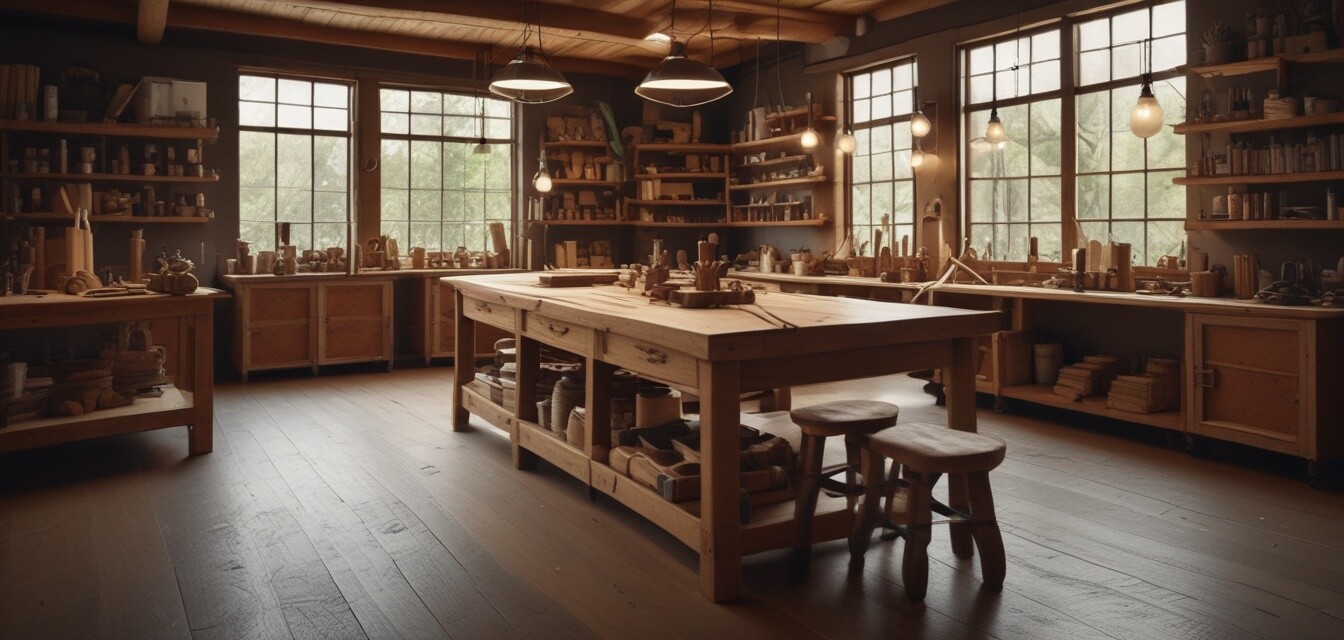
Creating a Sustainable Workshop: The Role of Wood
Key Takeaways
- Choosing sustainable wood sources is essential for a greener workshop.
- Utilizing eco-friendly tools and finishes minimizes environmental impact.
- Incorporating recycling and waste management practices benefits sustainability.
- Sustainable workshops promote health and safety through better materials.
- Knowledge of local lumberyards can enhance sustainable sourcing.
Setting up a sustainable woodworking workshop is not just a trend, but a responsibility towards our environment. By focusing on eco-friendly materials and practices, woodworkers can contribute to sustainability while enjoying the timeless beauty of natural wood. This guide offers insights and tips on how to develop a greener workshop, emphasizing the crucial role of wood in sustainable practices.
Understanding Sustainable Wood Sources
When looking to source wood sustainably, it is important to understand the distinctions between various types of wood. Below is a comparison of common wood types:
| Wood Type | Sustainability Level | Notes |
|---|---|---|
| Reclaimed Wood | High | Reduces waste; unique character |
| Bamboo | High | Fast-growing; renewable resource |
| Cedar | Moderate | Natural insect repellent; long-lasting |
| Hardwoods (e.g., Oak, Maple) | Varies | Check for certifications (FSC) |
| Softwoods (e.g., Pine, Fir) | Varies | Often less durable but more affordable |
Eco-Friendly Tools for Woodworkers
To reduce your environmental impact, consider using eco-friendly tools and products. Look for tools that are made from sustainable materials or that come with a lower carbon footprint. Below are some recommendations:
- Hand tools over power tools where possible.
- Electric tools powered by renewable energy.
- Tools from manufacturers that prioritize sustainability.
Choosing Sustainable Finishes
Finishes play a significant role in the overall sustainability of your woodworking projects. Traditional finishes can release harmful chemicals, which is why opting for eco-friendly finishes is advisable. Consider these options:
- Plant-based oils (e.g., linseed oil, tung oil)
- Water-based stains and sealants
- Natural waxes (e.g., beeswax or soy wax)
Recycling and Waste Management in Woodworking
Effective waste management is key to sustainable woodworking. Managing sawdust and wood scraps can significantly reduce your workshop's waste footprint. Here are some tips:
- Use sawdust for compost or as mulch.
- Repurpose off-cuts into smaller projects.
- Support local recycling initiatives for wood scraps.
Promoting Health and Safety
Using sustainable materials not only benefits the environment but also promotes health and safety in your workshop. Natural woods free from artificial chemicals contribute to better air quality and a healthier workspace.
Discovering Local Sourcing Options
Knowledge of local lumberyards and sustainable wood suppliers is essential for sourcing responsibly. Here are some benefits of sourcing local:
- Reduced transportation emissions.
- Support for small businesses and the local economy.
- Opportunity to learn about sustainable practices from suppliers.
Pros
- Environmental benefits through reduced waste and responsible sourcing.
- Unique and beautiful wood products that stand out.
- Improved workshop health and safety conditions.
Cons
- Potentially higher initial costs for sustainable materials.
- Limited availability of certain reclaimed woods.
Final Thoughts on Building a Sustainable Workshop
Creating a sustainable woodworking workshop is a rewarding endeavor that not only benefits the craftsman but also the planet. By prioritizing eco-friendly practices in sourcing materials, using sustainable tools, and promoting safety, woodworkers can contribute to a healthier environment.
Learn More About Sustainable Practices
For more tips and information on sustainable woodworking, check out our blog categories such as Buying Guides, News and Trends, and visit our section on Sustainable Practices